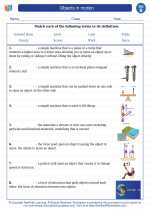Objects in motion -> linear motion
Linear Motion
Linear motion is the movement of an object in a straight line. It can be described using measurements such as distance, time, speed, and acceleration.
Key Concepts
- Distance: The total length of the path traveled by an object.
- Displacement: The change in position of an object in a specific direction.
- Speed: The rate at which an object covers distance, calculated as distance divided by time.
- Velocity: The rate at which an object changes its position, including both speed and direction.
- Acceleration: The rate at which an object's velocity changes over time.
Formulas
Here are some formulas that are commonly used in linear motion:
- Speed: \( \text{Speed} = \frac{\text{Distance}}{\text{Time}} \)
- Velocity: \( \text{Velocity} = \frac{\text{Displacement}}{\text{Time}} \)
- Acceleration: \( \text{Acceleration} = \frac{\text{Change in Velocity}}{\text{Time}} \)
Study Guide
When studying linear motion, it's important to understand the difference between distance and displacement. Distance is the total path length traveled, while displacement is the change in position from the starting point to the ending point.
Additionally, understanding the concepts of speed, velocity, and acceleration is crucial. Speed is a scalar quantity that only has magnitude, while velocity is a vector quantity that includes both magnitude and direction. Acceleration, on the other hand, represents how quickly an object's velocity is changing.
Practice using the formulas for calculating speed, velocity, and acceleration in different scenarios to solidify your understanding of linear motion.
Explore real-world examples of linear motion, such as the motion of vehicles, athletes, and moving objects, to see how these principles apply in everyday situations.
Lastly, make sure to grasp the graphs and equations that represent linear motion, as they can provide valuable insights into an object's movement over time.
Remember, mastering the concept of linear motion will not only help you in science but also in understanding the motion of objects in the world around you.
[Linear Motion] Related Worksheets and Study Guides:
.◂Science Worksheets and Study Guides Second Grade. Objects in motion

 Worksheet/Answer key
Worksheet/Answer key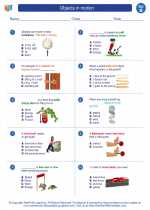
 Worksheet/Answer key
Worksheet/Answer key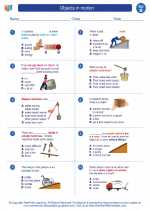
 Worksheet/Answer key
Worksheet/Answer key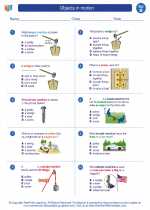
 Vocabulary/Answer key
Vocabulary/Answer key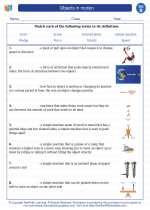
 Vocabulary/Answer key
Vocabulary/Answer key